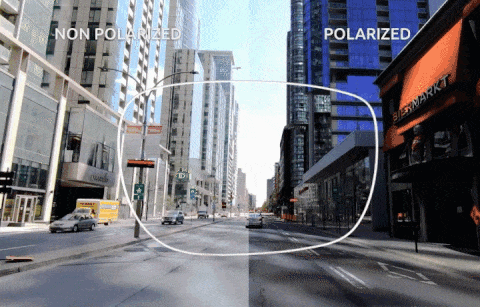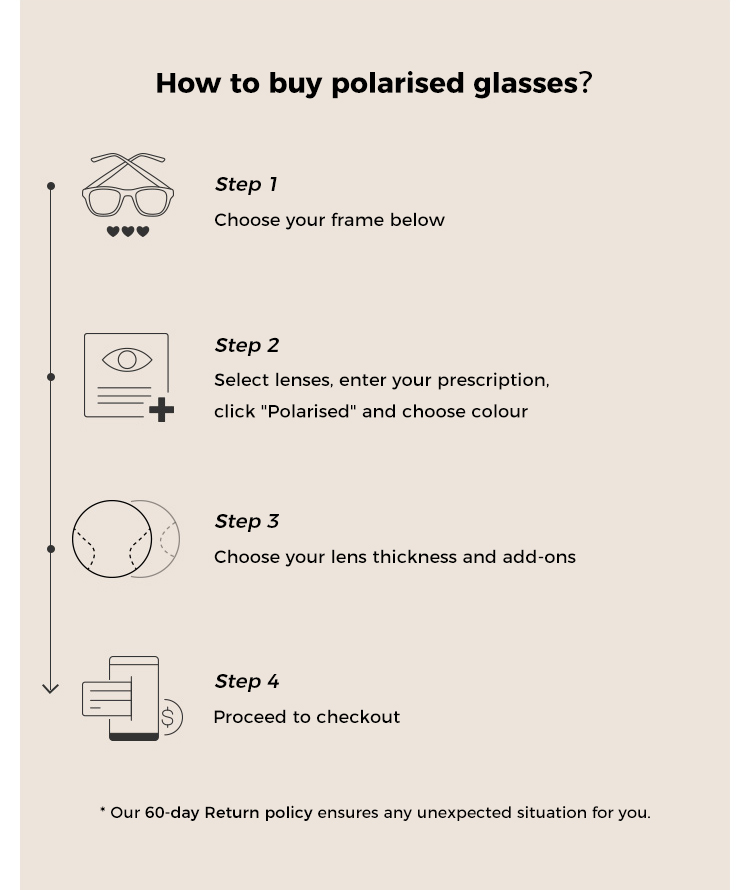
Polarised lenses eliminate 99.9% of glare, enhancing colour, contrast and comfort.


Polarised lenses eliminate 99.9% of glare, enhancing colour, contrast and comfort.


As we all know we see by virtue of the light that enters our eyes on sunny days. Without good sunglasses, brightness and glare result in a loss of visual performance, which is produced when an object or light source in the field of vision is brighter than the amount of light to which the eyes are adapted. Most sunglasses will provide some absorption to dampen brightness, but only polarised sunglasses can effectively eliminate blinding glare. However, polarised sunglasses are not recommended to pilots. Polarised lenses eliminate reflected glare from a flat surface. However, looking through a laminated aircraft windscreen, while wearing polarised lenses can result in a reduced retinal image. Also, some windscreen of aircraft is already polarised, hence polarised sunglasses result in double polarization. Moreover, some 3-D movies also use polarizing lenses. Usually, one lens is horizontally polarised and the other one is vertically polarised so that each eye sees a slightly different version of the movie screen. The eyes attempt to reconcile the two images for the brain, resulting in the illusion of a three-dimensional image. Experimenters with several spare pairs of 3-D glasses lying around can play with the effects of polarization for themselves.
Since we already know the usage of polarised sunglasses, how do I know if my sunglasses are polarised? If you have the same doubt, you can just look through the glasses at the reflection of any object on a window panel. Then, turn the sunglasses around as if they were the hands of a clock facing you. If the intensity of the reflection doesn't change concerning what you see through the window, they are not polarised. Another way is to hold them at 90° to another pair labeled as polarised and if the lenses go dark where the lenses overlap, then your sunglasses are polarised too. If there's no change, your lenses aren't polarised. Moreover, not all polarization is equal. Because not all polarised sunglasses block glare as well as they should. A polarizing filter is no guarantee of an effective glare-blocking lens. It depends on the quality of the filter and how the lens has been produced. Cheap polarised sunglasses may only cut out 10% of reflected light, but many people don't realize there is a difference in filter quality in better-made glasses. For example, Julbo's Polycarbonate polarised lenses cut out around 60-70% of reflected light, and the NXT Cameleon, Octopus, and Polar HD lenses cut out 99% of reflected light.One-on-One Service, Save Up to 90%

Copyright © 0 Firmoo Online Optical Store.All Rights Reserved




